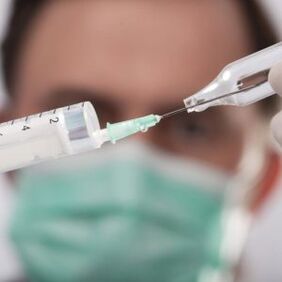
Treatment of papilloma virus is a complex technique to eliminate the symptoms and causes of infection by surgical and therapeutic methods. Malignant neoplasms - papillomas - can occur in different parts of the body or in the mucous membranes. Often such formations are harmless, but there are situations that need to be eliminated to prevent the formation from turning into an oncological tumor. Therefore, proper treatment of HPV, it is very important to follow all the recommendations of traditional medicine.
Drug treatment
It is not possible to completely cure papilloma virus in a short time. To solve the problem, it is important to use antiviral and immunomodulatory drugs that prevent the spread of the disease and the malignancy of the resulting formations. All drugs in the form of tablets, injections or suppositories are prescribed to patients after diagnosis.
Drugs from immunostimulatory groups, antiviral agents, homeopathy, anti-tumor drugs and cytotoxic drugs are used to treat papillomavirus. The first 3 groups of drugs can be in different forms (tablets, injections, etc. ) and are used to combat the cause of the disease, and the last 2 groups are used to gradually remove the resulting formations.
The purpose of the use of immunostimulants is to strengthen and activate the protective functions of the body, to stimulate the synthesis of antibodies that will fight viruses and infections. If you use immunostimulants in combination with antiviral drugs, the effect of the latter will be many times higher.The effectiveness of immunomodulators used in the treatment of HPV will depend on the individual reactions of the patient's body and the treatment complex they are part of. However, in most cases, the disease regresses with the use of an obvious papillomavirus clinic and immunomodulators, and may even disappear completely.
| Active ingredient | Pharmaceutical Group |
|---|---|
| Taurine, benzocaine, interferon | Antimicrobial and antiparasitic substances. Antiviral drugs. Interferons |
| Interferon | Antimicrobial and antiparasitic substances. Antiviral drugs. Interferons |
| Echinacea Purpurea Water | Drugs that correct immune processes. Drugs that stimulate immune processes |
| Purified Antibodies to Human Detox Interferon | Homeopathic Medicines |
| Lyophilized bacterial lysate: Streptococcus pneumoniae, Haemophilus influenzae, Klebsiella pneumoniae, Klebsiella ozaenae, Staphylococcus aureus, Streptococcus viridans, Streptococcus pyogenes, Mre. | Drugs that correct immune processes. Drugs that stimulate immune processes |
| Antibodies against human gamma interferon proximity cleared, antibodies against histamine proximity cleared, antibodies against CD4 proximity cleared | Antiviral, antihistamine |
| Sodium deoxyribonucleate | Drugs that correct immune processes. Drugs that stimulate immune processes |
| Human gamma interferon (recombinant) | Antimicrobial and antiparasitic substances. Antiviral drugs. Interferons |
| Mixed bacterial lysates (Streptococcus pneumoniae, type I + Streptococcus pneumoniae, type II + Streptococcus pneumoniae, type III + Streptococcus pneumoniae, type V + Streptococcus pneumoniae, type VIII + Streptococcus pneumoniae)> | Other immunomodulators |
| Oxyethylammonium methylphenoxyacetate | Drugs that correct immune processes. Drugs that stimulate immune processes |
| Inosine pranobex (inosiplex) | Antimicrobial and antiparasitic substances. Antiviral drugs.
Antiviral drugs of other groups |
| Polyoxidonium | Drugs that correct immune processes. Drugs that stimulate immune processes |
| Glycyrrhizic acid has been activated | Antimicrobial and antiparasitic substances.
Antiviral drugs. Antiviral drugs of other groups |
Surgical removal of papillomas
Can I apply for deletion
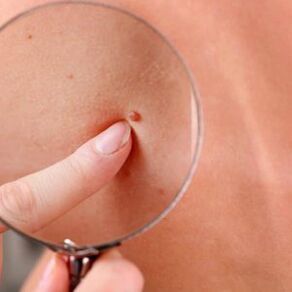
Some papillomas that appear on the body do not cause any discomfort, while others grow and cause both cosmetic defects and physical discomfort. If a papilloma is a concern, it is always removed, but if the appearance does not cause any discomfort, you need to understand each case, whether it is worth removing the formations.
Coterization with liquid nitrogen
Today, the most acceptable way to get rid of papillomas is to burn them with liquid nitrogen or cryodestruction. The technique can be performed using a cryoprobe, which is used in most beauty salons, or with a manual device.
Hardware requires special equipment to use cryodestruction techniques.
Cryodestruction is performed in the following stages:
- In the preparation phase, the nitrogen-affected area is anesthetized with local anesthetic solutions for patients with low pain thresholds or extensive papilloma growth. In other cases, patients are advised to take oral painkillers 1 hour before the procedure.
- Liquid nitrogen is applied directly to the area of the papilloma during freezing or cryodestruction. At the same time, the validity period for 1 point is only a few seconds, so you can freeze 40 papillomas in the body in 5 minutes. Prior to cryosurgery, the patient is warned that there may be a feeling of bloating where nitrogen is applied during freezing.
- In the last stage, the area of the skin treated with liquid nitrogen is disinfected with disinfectants.
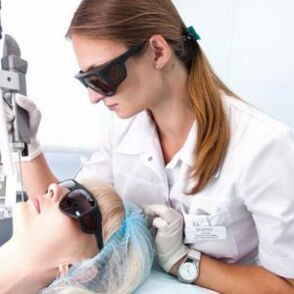
The need for cryodestruction in each case is determined by the attending physician. If the patient is at risk of papilloma degeneration to a malignant formation, removal should be performed. Factors influencing the need for cryodestruction are:
- mechanical damage to the neoplasm;
- decrease in the patient's level of immunity;
- use of oral contraceptives;
- bad habits of the patient;
- Localization of growths in areas that are regularly injured during life.
Cryodestruction is also indicated for aesthetic and physical discomfort of the patient due to the presence of papilloma in the body.
The main contraindications to the use of cryodestruction are acute infections of the patient's body, inflammatory processes in the internal organs, atypical types of neoplasms, pathological cold intolerance. Complications that can occur after the removal of warts with liquid nitrogen may include scarring and tissue pigmentation at the site of cryopreservation.
Ointments and lotions
Today, you can buy many special lotions and ointments in pharmacies to remove papillomas in the most delicate areas of the skin.
To sharpen the education, ointments should be used only in the complex treatment of the virus, which should be carried out with the help of tablet immunomodulators and antiviral drugs.
Multivitamins that will increase the state of the immune system and its readiness to produce protective antibodies against the virus will not interfere.
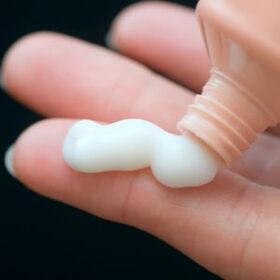
The most accessible ointment that can defeat papilloma is an ointment containing salicylic acid, which has a keratotic, bactericidal and restorative effect on the affected tissue. The agent is applied with a dot to the affected area without affecting the surrounding healthy tissues and can be used for burns.
You can also find ready-made solutions for removing papillomas in any pharmacy. With the help of such solutions it is necessary to make lotions that kill the pathogenic microflora in the skin area and eliminate papilloma.
Surgical method
Surgical removal of growths involves the physical removal of papillomas with a scalpel.
Doctors recommend removal if the size of the tumor is more than 3 centimeters in diameter.
When manipulating, the surgeon first disinfects the area around the growth and the growth itself with disinfectants, then performs manipulations with local anesthesia and continues to cut the neoplasm directly. After the papilloma is removed, it should be sent for histological examination to determine the oncological nature of the cells. The wound under the wart removed 2 weeks after the operation completely heals and heals.
Key Indications for Papilloma Surgery:
- large formations, their deep and straight views;
- urgent need for papilloma removal;
- papilloma malignancy;
- Inadmissibility of other methods to cancel education.
The main advantages of the classic excision of papillomas are complete elimination of the problem in 1 operation, low probability of recurrence in this case, safe manipulation, no list of contraindications to the procedure and an acceptable price for most patients.
Disadvantages of surgical removal of papillomas include scarring at the site of excision, sometimes keloid scarring, long-term postoperative rehabilitation, exposure to ultraviolet radiation, and invasiveness of the procedure. Complications of the operation in the form of redness, itching, scarring at the site of excision and an increase in body temperature can also occur in rare cases.Laser extraction
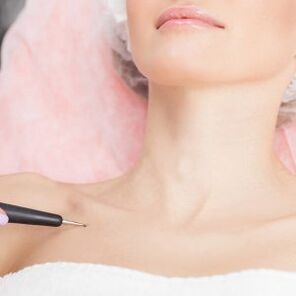
The gold standard of modern medicine in the removal of neoplasms is represented by laser removal of papillomas. Until recently, the removal of papillomas left behind scars, but today laser technology allows you to preserve the beauty of the skin without visible changes.
The basis of laser therapy for papillomas is evaporation, ie the ability of the beam to cut the tissue and evaporate life-giving moisture from the surface. Depending on the nature of the neoplasm, the devices allow to determine the duration and intensity of skin exposure.
The laser removal procedure itself takes place in several stages:
- the doctor first performs a dermatoscopy and determines the type of laser to be used;
- The site of exposure is treated with a local anesthetic;
- The laser removal session lasts a few minutes;
- At the end of the procedure, the exposed area is disinfected and, if possible, contact with clothing in this area is applied to it with a sterile dressing;
- provides outpatient wound rehabilitation services outside the clinic.
After laser removal of papillomas, patients are not allowed to sunbathe, visit swimming pools and spas, take a bath or use any cosmetics on the scar area.
These restrictions are temporary and are agreed by the specialist and the patient before discharge from the hospital.
Laser removal has a number of contraindications, both relative and absolute, identified in each situation. Often the technique is not designed for diabetes, herpes, fever, flu and SARS, hematopoietic organ diseases.
Traditional methods
Horses

Since ancient times, using various herbal infusions, healers have eliminated all manifestations of papillomatosis. Many recipes have survived to this day because of their effectiveness and lack of negative effects on the body.
A popular folk remedy for HPV is wormwood tincture. With its help, you can get rid of formations on the entire surface of the body. The most important thing is to know exactly when and how to collect herbs for medicine.
Worms must be harvested in a certain way. The most useful leaves and flowers in this herb, but it is not suitable for thick root tincture. Less commonly, it is recommended to remove wormwood root for medicinal purposes. All collected plant parts are washed and placed on a flat surface to dry. During the drying process, the herbs should be rotated periodically to prevent them from drying out. The finished dried plant is stored in a dry glass bowl with a tight lid.
The tincture against wormwood papillomas will not only get rid of this problem, but also eliminate pathogenic microflora and have a beneficial effect on the human stomach.
Tincture for papillomatosis is at least 2 weeks, after which there is a break in treatment. Each of the possible tinctures is taken orally 5 drops 6 times a day.
Wormwood tincture can be prepared in oil, alcohol or cognac. For the oil tincture you need 25 grams of wormwood seeds and 0, 5 cups of olive oil. The seeds are crushed in a coffee grinder and placed in a glass jar fried in boiling water. The top seeds are poured with olive oil, mix everything and cover with a tight lid. The mixture is brewed in a cool place for three days, filtered and ready for use.
Alcohol tincture is made from 100 grams of wormwood powder based on crushed plant leaves and 0. 5 liters of vodka in a blender. Everything is mixed and brewed in a glass for 10-14 days, then filtered and used as prescribed. Tincture should be stored in the refrigerator.
To make a tincture of wormwood on cognac, you need 50 grams of chopped herbs and a glass of cognac. The ingredients are mixed and sent to a water bath to evaporate for 30 minutes. The product is then filtered and sent to a dark place for 5 days.
For the treatment of papillomas, you can also prepare an herbal infusion of horseradish, lemon balm, dandelion roots, plantain and nettle mixed in equal proportions (1 teaspoon each). The mixture is crushed, then pour 3 tablespoons of herbs in a liter of boiling water and boil for 10 minutes on low heat. The infusion should be insisted for several hours after removal from the oven.
Ready tincture is used for 7 days before meals ¼ glass. The tool strengthens the immune system, which promotes the spontaneous absorption of papillomas.
Soda for healing
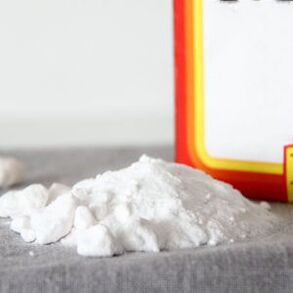
Baking soda has long been used to treat many skin problems at home, including papillomas. One of the properties of soda is its ability to alkalize an acidic environment, which strengthens the immune system, removes toxins and creates unfavorable conditions for bacteria and pathogenic microbes. As a result, the viruses in the body stop multiplying and die. The antiseptic and disinfectant effect of soda is also known, which is useful in the treatment of papillomas. Soda softens tissues, eliminates the symptoms and manifestations of the virus - education. Soda for the treatment of HPV is used internally, in the form of inhalations and topical lotions.
To prevent tumor malignancy and cancer from turning into neoplasms, some traditional doctors recommend drinking a soda solution in milk. It is made from 1 cup of hot boiled milk and ¼ teaspoon of baking soda. One solution is used three times a day, with each subsequent intake, the mass of soda increases slightly until the concentration in the milk reaches 1 tablespoon. However, for those with pathology of the gastrointestinal tract, drinking milk-soda solution is not allowed.
It is best to consult a doctor before using this recipe.
Baking soda inhalation is suitable as a more gentle immunostimulation method. Boil 1 liter of water for breathing, add 3 teaspoons of soda to boiling water, stir, bend over the ceiling, put a towel on your head to prevent steam, and breathe in soda vapors until the water cools. Breaths are taken several times a day for 5 days.
Laundry soap
Washing soap has a drying effect on the skin - it removes moisture from them, causing them to dry out and gradually die cells. This feature is very useful when removing papillomas at home. Moisture in the cells of the neoplasm helps its vital activity, and if it stops leaking, the wart will dry up and disappear.
The most common method of treating papillomas with laundry soap is night application in the neoplasm area. After taking a bath, the area with papilloma is moisturized and rubbed extensively with laundry soap without damaging the accumulation.
After applying a thick layer of soap, you should wait until it dries and go to bed. Wash the soap with plain water in the morning and repeat the procedure in the evening.
Specificity of treatment in women
Damage to internal and external genitalia

In modern medicine, papillomatosis is treated in women according to various methods, but it is still not possible to completely eliminate HPV from the body. Therefore, any treatment is aimed at eliminating the clinical symptoms of the disease individually.
There are many similarities in the treatment of HPV in women's internal and external genitalia. The only difference is that when neoplasms are found in the external genitalia, specialists can prescribe immunomodulatory drugs in one direction, and in the internal genitals (mucous membranes) are used stronger drugs that prevent the development of HPV oncopathology.
Treatment of genital papillomatosis in women can be carried out by destructive and therapeutic methods. The appropriate method should be selected by a specialist in each specific situation.
intraductal papillomas
According to the classification of intraductal papillomas by specialists as a precancerous condition of the mammary glands, one of the features of their treatment is the use of only surgical methods. In the case of papillary cystadenoma, surgeons perform a sectoral resection of the mammary glands, while the tissue is removed through altered ducts. Such an operation is performed through a periareolar incision, which allows you to preserve both the shape and size of the breast in the future without the use of mammoplasty.
If a woman is diagnosed with intraductal papillary cancer, radical mastectomy is used as a treatment.
To prevent breast cancer, doctors recommend regular mammograms, treatment of mastopathy in the early stages, and attention to dyshormonal and inflammatory pathologies in the female genital organs.
Treatment for men
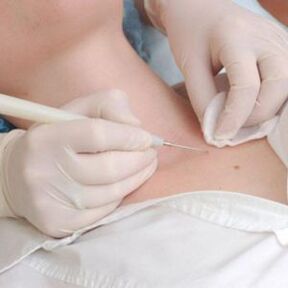
Treatment of HPV in male genitals is carried out with drugs and surgery. In this case, drug treatment is designed to suppress the virus, bring it to an anabiotic state and help strengthen the immune system.
Even small papillomas in the male genitals do not go away on their own, so it is common to remove them surgically:
- by electrocoagulation using electric current;
- freezing with liquid nitrogen - cryodestruction;
- to use a laser;
- radiosurgical method - a non-contact method based on exposure to radio waves of a certain frequency;
- by catering with special chemical solutions;
- traditional surgical excision with a scalpel; Use ointments that can eliminate
- accumulations.
The method of removing papillomas in the male genitals is selected individually depending on the nature of the infection. All of the above methods of destruction are valid by physicians and can be performed without the use of general anesthesia.
What to do if the papilloma is damaged
In the case of damage to the surface of the papilloma, the inflammatory process may begin in the affected tissues. Externally, this will manifest itself with a change in the color of the formation, swelling, redness, burning and itching. A diarrhea mixed with serous fluid with a bad or unpleasant odor, the creature begins to leak. If the condition of immunity is satisfactory, the tear area will soon dry out and no deviation will be visible. However, otherwise there is a risk of malignant tumors.
Mass trauma (burning, scratching, scratching) can cause HPV to spread to adjacent tissues and cause new lesions to grow. Such a process is more prone to oncological degeneration.
If the papilloma is still injured, apply a sterile dressing or cotton wool previously moistened with a 3% solution of hydrogen peroxide and leave this application for at least 10-15 minutes. Once the bleeding has stopped, the wound is treated with alcohol to disinfect the skin surface and prevent infection and fungus from entering the wound. In the absence of alcohol, disinfection is carried out using iodine or bright green, but in the future, these funds will prevent monitoring the condition of the wound.
When there is significant bleeding due to papilloma damage, angioma trauma is diagnosed - an increase in benign blood vessels. Angioma damage is not dangerous; As a result of such a pathology, oncology does not develop.
Where to go in case of illness
If you find various formations on the skin in the first stage, you should consult a dermatologist. This doctor will make the necessary diagnosis, determine the type of virus and determine the patient's next course of action.
Dermatologists often believe that the sooner the papilloma is removed, the lower the risk of dangerous consequences, but everything is individual. The dermatologist will explain to the patient which specialist should be removed and which technique is better to choose in this case. The doctor will also prescribe an additional treatment regimen, after which it will be possible to go to consult a surgeon.
If you have genital papillomas, you should consult a dermatovenerologist. If the formations are localized in the anus, the proctologist will treat such a pathology. In the presence of papillomas in the ENT organs or mucous membranes of the oral cavity, the patient is referred to an otolaryngologist. Papillomas of the genitals in men are treated by a urologist or dermatovenerologist, and in women a gynecologist deals with these problems.















































































